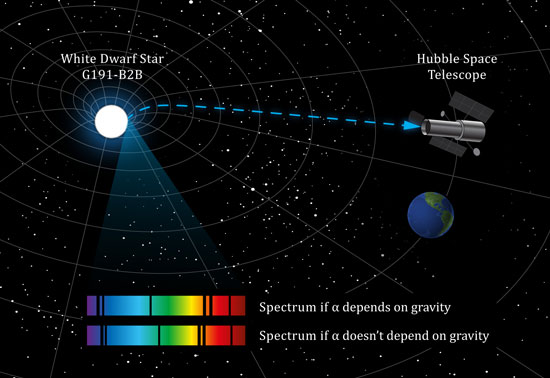 Answering the ultimate question to Life, Universe and Everything? Not quite, but an international team of scientists have conducted research that opens up new possibilities for exploring what to date have only been theories of physics.
Answering the ultimate question to Life, Universe and Everything? Not quite, but an international team of scientists have conducted research that opens up new possibilities for exploring what to date have only been theories of physics.
Jul 4th, 2013
Read more
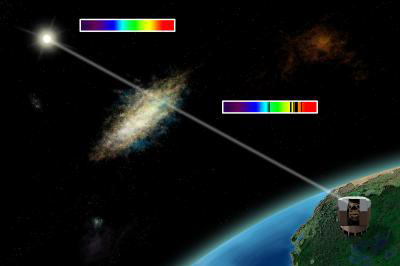 The early galaxies of the universe were very different from today's galaxies. Using new detailed studies carried out with the ESO Very Large Telescope and the Hubble Space Telescope, researchers, including members from the Niels Bohr Institute, have studied an early galaxy in unprecedented detail and determined a number of important properties such as size, mass, content of elements and have determined how quickly the galaxy forms new stars.
The early galaxies of the universe were very different from today's galaxies. Using new detailed studies carried out with the ESO Very Large Telescope and the Hubble Space Telescope, researchers, including members from the Niels Bohr Institute, have studied an early galaxy in unprecedented detail and determined a number of important properties such as size, mass, content of elements and have determined how quickly the galaxy forms new stars.
Jul 3rd, 2013
Read more
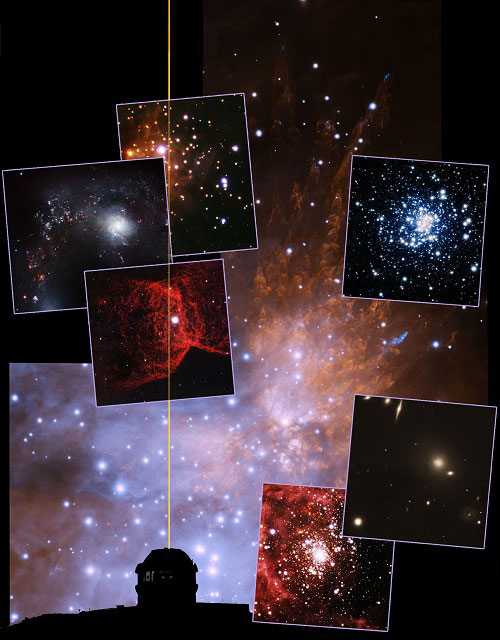 A unique new instrument at Gemini South in Chile takes the removal of atmospheric distortions (using adaptive optics technology) to a new level. Today's release of seven ultrasharp, large-field images from the instrument's first science observations demonstrate its remarkable discovery potential.
A unique new instrument at Gemini South in Chile takes the removal of atmospheric distortions (using adaptive optics technology) to a new level. Today's release of seven ultrasharp, large-field images from the instrument's first science observations demonstrate its remarkable discovery potential.
Jul 2nd, 2013
Read more
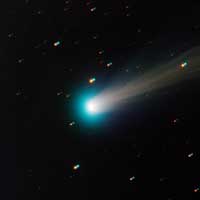 This July 4th the solar system is showing off some fireworks of its own.
This July 4th the solar system is showing off some fireworks of its own.
Jul 2nd, 2013
Read more
The film shows state-of-the-art telescopes in high-resolution time-lapse, mesmerising 3D versions of celestial structures, and a 3D simulation of the evolution of the Universe.
Jul 2nd, 2013
Read more
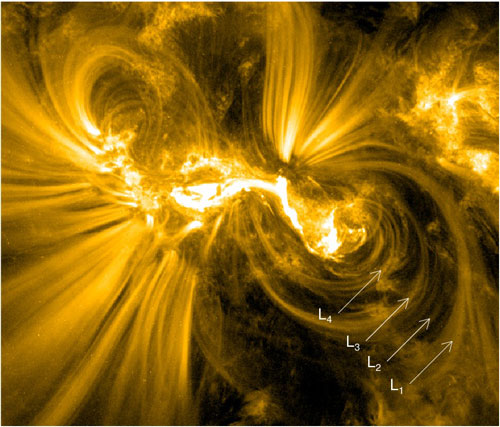 Movies of giant loops projecting from the surface of the Sun are giving new insights into the complex mechanisms that drive solar flares and Coronal Mass Ejections (CMEs). These eruptions release vast energy and electrically charged particles that can affect the Earth through space weather.
Movies of giant loops projecting from the surface of the Sun are giving new insights into the complex mechanisms that drive solar flares and Coronal Mass Ejections (CMEs). These eruptions release vast energy and electrically charged particles that can affect the Earth through space weather.
Jul 2nd, 2013
Read more
A new study provides the first conclusive proof of the existence of a space wind first proposed theoretically over 20 years ago. By analysing data from the European Space Agency's Cluster spacecraft, researcher Iannis Dandouras detected this plasmaspheric wind, so-called because it contributes to the loss of material from the plasmasphere, a donut-shaped region extending above the Earth's atmosphere.
Jul 2nd, 2013
Read more
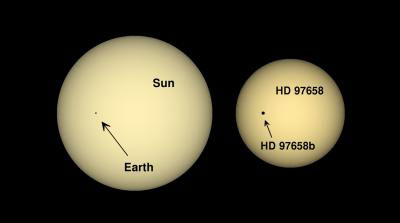 Hovering about 70 light-years from Earth is a star astronomers call HD 97658, which is almost bright enough to see with the naked eye. But the real 'star' is the planet HD 97658b, not much more than twice the Earth's diameter and a little less than eight times its mass.
Hovering about 70 light-years from Earth is a star astronomers call HD 97658, which is almost bright enough to see with the naked eye. But the real 'star' is the planet HD 97658b, not much more than twice the Earth's diameter and a little less than eight times its mass.
Jul 1st, 2013
Read more
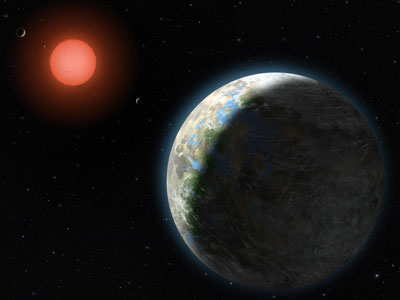 A new study that calculates the influence of cloud behavior on climate doubles the number of potentially habitable planets orbiting red dwarfs, the most common type of stars in the universe. This finding means that in the Milky Way galaxy alone, 60 billion planets may be orbiting red dwarf stars in the habitable zone.
A new study that calculates the influence of cloud behavior on climate doubles the number of potentially habitable planets orbiting red dwarfs, the most common type of stars in the universe. This finding means that in the Milky Way galaxy alone, 60 billion planets may be orbiting red dwarf stars in the habitable zone.
Jul 1st, 2013
Read more
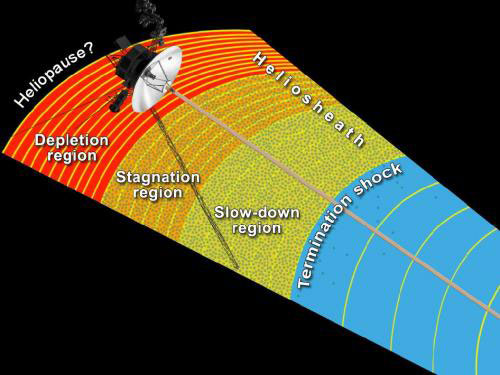 Data from NASA's Voyager 1 spacecraft continues to provide new insight on the outskirts of our solar system, a frontier thought to be the last that Voyager will cross before becoming the first man-made object to reach interstellar space.
Data from NASA's Voyager 1 spacecraft continues to provide new insight on the outskirts of our solar system, a frontier thought to be the last that Voyager will cross before becoming the first man-made object to reach interstellar space.
Jun 27th, 2013
Read more
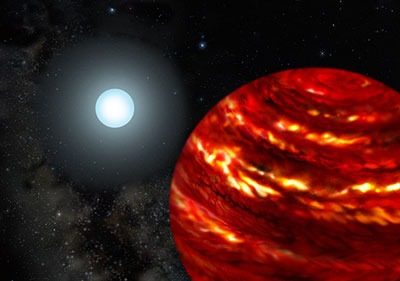 Gemini Observatory's Planet-Finding Campaign finds that, around many types of stars, distant gas-giant planets are rare and prefer to cling close to their parent stars. The impact on theories of planetary formation could be significant.
Gemini Observatory's Planet-Finding Campaign finds that, around many types of stars, distant gas-giant planets are rare and prefer to cling close to their parent stars. The impact on theories of planetary formation could be significant.
Jun 27th, 2013
Read more
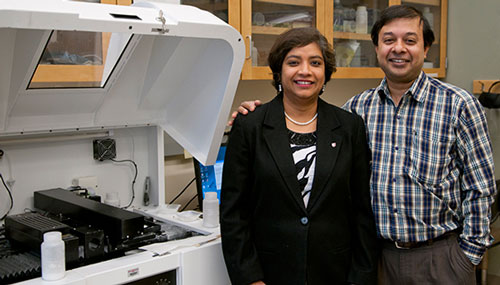 Researchers at Washington State University are working with Aerojet Corporation on an exploratory project to make custom satellite parts using 3-D printing. Lower costs, less waste, quicker turnaround and easier modification are some potential benefits.
Researchers at Washington State University are working with Aerojet Corporation on an exploratory project to make custom satellite parts using 3-D printing. Lower costs, less waste, quicker turnaround and easier modification are some potential benefits.
Jun 27th, 2013
Read more
Sterilized Mars spacecraft largely a waste of money.
Jun 27th, 2013
Read more
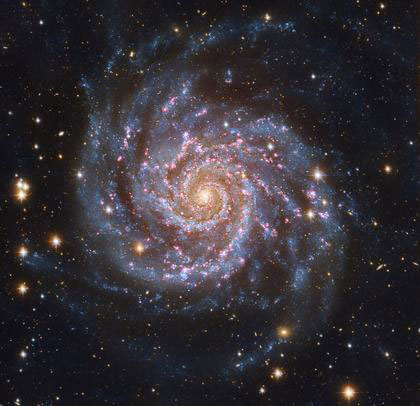 Spiral galaxies like our own Milky Way appear to be much larger and more massive than previously believed, according to a new University of Colorado Boulder study by researchers using the Hubble Space Telescope.
Spiral galaxies like our own Milky Way appear to be much larger and more massive than previously believed, according to a new University of Colorado Boulder study by researchers using the Hubble Space Telescope.
Jun 27th, 2013
Read more
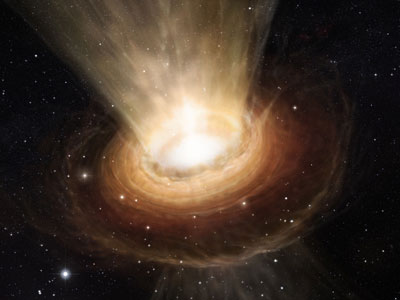 Astronomers have gathered the most detailed observations ever into the surroundings of the supermassive black hole at the centre of an active galaxy, and made a surprising discovery: dust is being propelled into space in a ring-shaped disk.
Astronomers have gathered the most detailed observations ever into the surroundings of the supermassive black hole at the centre of an active galaxy, and made a surprising discovery: dust is being propelled into space in a ring-shaped disk.
Jun 27th, 2013
Read more
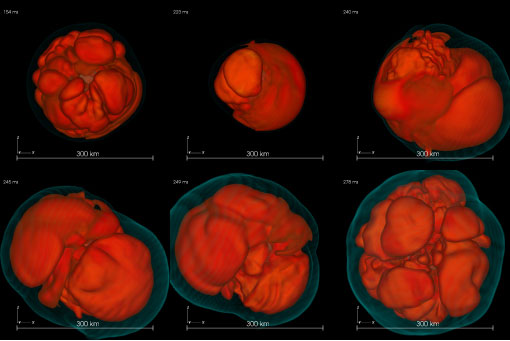 A team of researchers at the Max Planck Institute for Astrophysics conducted the most expensive and most elaborate computer simulations so far to study the formation of neutron stars at the center of collapsing stars with unprecedented accuracy.
A team of researchers at the Max Planck Institute for Astrophysics conducted the most expensive and most elaborate computer simulations so far to study the formation of neutron stars at the center of collapsing stars with unprecedented accuracy.
Jun 27th, 2013
Read more
The University of Colorado Boulder has become a full institutional member of the Sloan Digital Sky Survey-IV, an ambitious effort by some of the world's top astronomers to map the celestial sky in three dimensions to learn more about the structure and evolution of the universe.
Jun 26th, 2013
Read more
All stars begin their lives in groups. Most stars are born in small groups that quickly fall apart. Others form in huge, dense swarms, where stars jostle with thousands of neighbors while strong radiation and harsh stellar winds scour interstellar space, stripping planet-forming materials from nearby stars. It would thus seem an unlikely place to find alien worlds. Yet 3,000 light-years from Earth, in the star cluster NGC 6811, astronomers have found two planets smaller than Neptune orbiting sun-like stars.
Jun 26th, 2013
Read more
 Answering the ultimate question to Life, Universe and Everything? Not quite, but an international team of scientists have conducted research that opens up new possibilities for exploring what to date have only been theories of physics.
Answering the ultimate question to Life, Universe and Everything? Not quite, but an international team of scientists have conducted research that opens up new possibilities for exploring what to date have only been theories of physics.
 Subscribe to our Space Exploration News feed
Subscribe to our Space Exploration News feed










